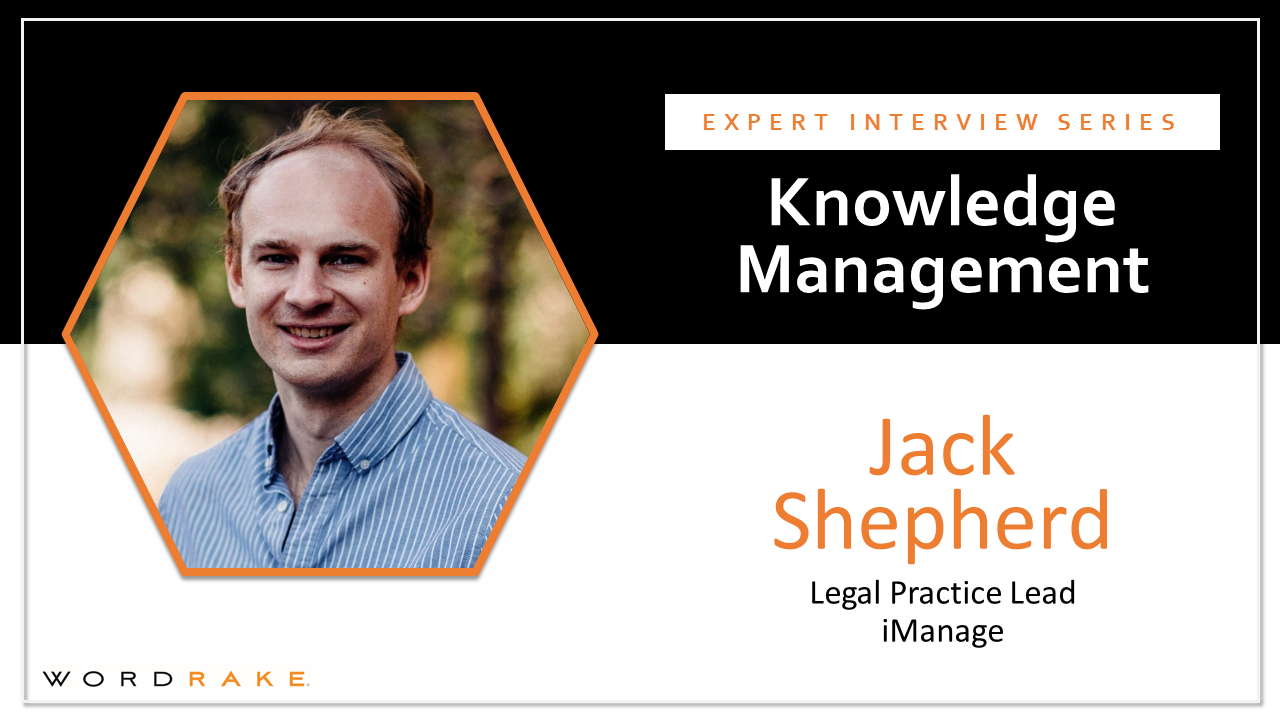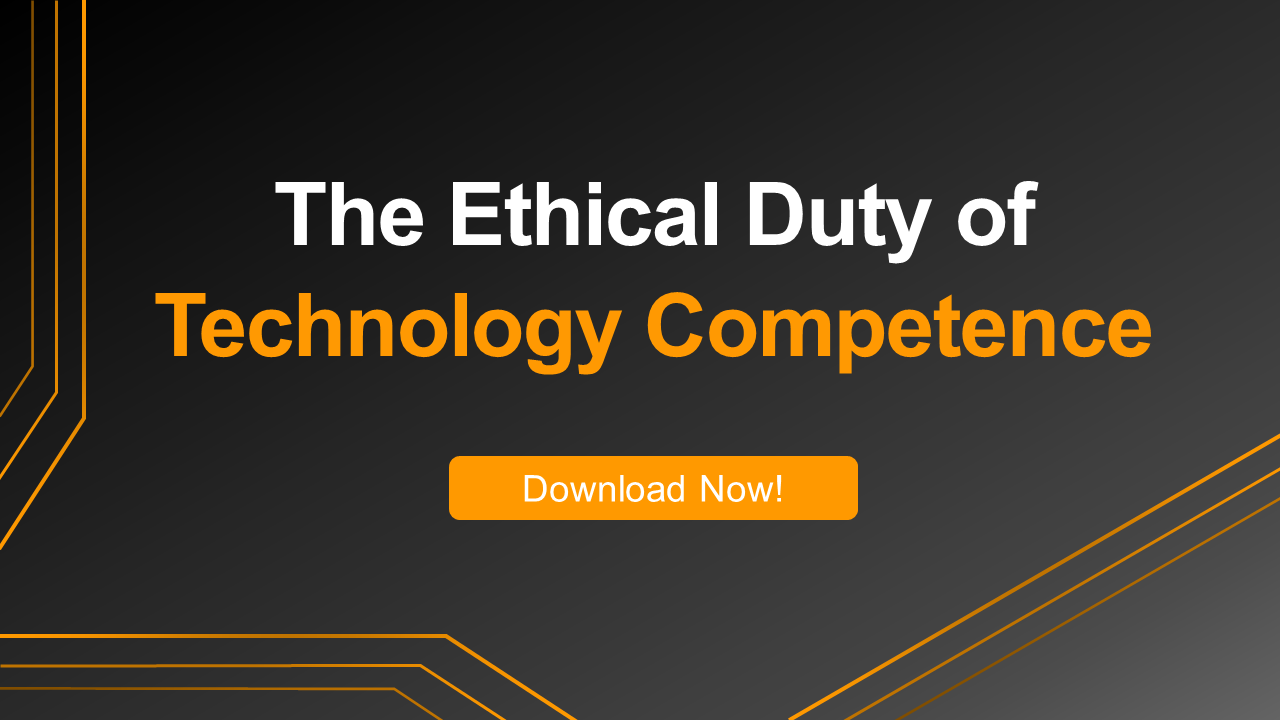Legal documents are full of valuable knowledge. They are also the easiest source of knowledge to improve the firm’s future document creation and strategies. But a sea of data is useless unless what you need can be easily found—good knowledge management is the difference between time wasted and time saved. Legal tech has made incredible advances for knowledge management, but its reputation as a silver bullet can actually make legal work harder rather than easier, unless we know how to harness its power. Knowledge management expert and former lawyer Jack Shepherd warns against assuming tech can automatically improve legal practices, and explains the importance of defining goals, determining realistic strategies, and putting in the work when implementing knowledge management technologies. Read on to find out why knowledge management is essential to improved document creation, and how the barriers, and solutions, to reaping these benefits are not what (or who) you thought they might be.
What is your role and where does it fit in your organization?
My role is Principal Business Consultant at iManage. My responsibility is to make sure firms develop concrete knowledge management goals and strategies to improve their processes, and understand how our solution (Knowledge Unlocked) can help achieve this. I also advise law firms and legal teams generally on technology strategy.
I work very closely with firms in relation to our own knowledge management product. This involves working with technical teams to deliver incremental functionalities based on the data they have available to them.
More broadly, I am a huge champion of ensuring we place the needs of users at the heart of everything we do. This means that I also work closely with firms to ensure processes are in place at their end to build structured information that can be used by lawyers. At the start of projects, one of the first things I will recommend doing is involving business users and attorneys so that we understand how we can deliver as much value as possible.
What prompted your interest in knowledge management?
Knowledge is the most underused asset at most firms, but most acknowledge it is the most important. Sharing information does not always come naturally to lawyers, who are often trained to believe that everything they do is unique, and that all information is too confidential to be used by others. Other firms lack resource or budget to hire specific knowledge management teams.
Nonetheless, most lawyers will admit that knowledge is the thing that their clients pay for. Without knowledge, the services law firms deliver are without value. There are a number of firms who are very interested in tapping into knowledge that would otherwise be in people’s heads.
Others are looking at how you can apply technology to a law firm’s accumulated experience to uncover insights that would not be readily apparent to an individual.
Knowledge sits at the heart of everything lawyers do. It needs to be embedded in all technologies and processes lawyers undertake. I want to help firms do more with the vast amounts of experience, information, and work product they build up over time.
How do you define knowledge management?
Knowledge management means a number of things, and a knowledge management product or system might be one strand of a wider knowledge management strategy. For example, horizon scanning, knowledge staff, cultural initiatives, intranets, and data projects might all form part of a knowledge management strategy.
In relation to knowledge management systems and content, some take a narrow view, saying that knowledge management is mostly about producing in-house survival guides, practice notes, and precedents. On this narrow interpretation, the role of knowledge managers is to act as a research tool themselves, and a sounding board for lawyers to ask questions. The role is also to produce information that helps lawyers work.
Others take a broader and higher-level view. On this interpretation, knowledge management is more of a data wrangling exercise. Not so much around producing practice notes etc., but more about collecting and analysing data in a way that can produce insights to lawyers and their clients. This can help profitability (e.g. in the case of budgeting) and direct service to clients (e.g. in anticipating legal issues and having the inside track on how the other side is likely to react to a given proposal).
I think knowledge management is both of these things. There is certainly starting to be a convergence in these two approaches, which have classically divided Europe and North America.
What are the key elements of a good knowledge management strategy?
It all starts with outcomes. Why does a firm need knowledge management? Is it to drive profitability? Is it to protect against employees leaving and taking knowledge with them? Is it around differentiating from other law firms by being able to go beyond “finger in the air” legal analysis?
Many knowledge management strategies miss this; they start with the premise that knowledge management is required for knowledge management’s sake. I disagree. Like any processes in a law firm, it is essential to start with why you are doing it.
From there, things cascade down—around people, processes and technologies. Having a solid understanding of your firm’s data hygiene is crucial. Most firms will have data hygiene problems, i.e. around whether data is stored consistently and in a way that makes it actionable and available to lawyers. Understanding the processes and tooling you need to improve data hygiene is key.
Most law firms also struggle with the problem of incentives. Knowledge management systems usually rely on good content underpinning them. Content needs to be created or curated. Created content tends to be purpose-built content that was designed for knowledge, such as firm templates. Curated content tends to be work product captured from lawyers. Incentives are at play in both kinds of content. For example, how many busy lawyers have the time during their working days to create a template, when this cannot be billed to a client? How much headspace does a busy lawyer have to think about sharing their content with others as soon as they finish a piece of litigation? These are all challenges firms must not shy away from. They can be tackled, but rarely with technology alone.
How are knowledge management and innovation connected? What’s the difference? Why are the roles often combined?
In the law firm community, knowledge management is sometimes separated out from innovation. Firms that do this might think knowledge management is “less cool” than other kinds of innovation like AI contract review and transaction management. I think this is a mistake.
I take “innovation” to basically mean, “How can we do stuff better?” In this sense, knowledge management and innovation are inextricably linked. If we agree that knowledge is an essential part of a lawyer’s toolkit, why would we not think that better harnessing that information is innovation?
One other point I would make here is that exposing knowledge at the point of need is crucial for lawyers. Weave it into processes, rather than have it as a standalone exercise. Even if you take a narrow view of innovation, it is inevitable that whichever legal technologies you use will need to interact with some form of legal knowledge.
How has technology changed knowledge management?
Technology has had two key effects on knowledge management.
First, it has enabled business to organise information in new ways. Information no longer has to belong to one bookcase in a single place—a complex metadata schema can be applied to it that lets users reach the same information through different routes. Thanks to these developments, people can now search as well as browse for knowledge.
Second, it has led to an explosion of information. The number of documents produced in a standard project continues to exponentially increase. This means that knowledge embedded in work product can be harder to keep track of, as chaotic and undesigned processes lead to a low level of structure and organisation behind information. This might be referred to as “unstructured data”.
Many organisations have yet to exploit the capabilities of technology to structure their currently unstructured data. Some have put in the hard yards to design processes that better structure information, so that it can be re-used in the future. Others have not, and place their faith in the hands of artificial intelligence to do this for them.
What types of information assets come from basic office work such as documents, email, or calendar entries?
Email is a minefield. For law firms deeply concerned about quality of knowledge content, email is perhaps best avoided as you cannot guarantee people are accessing the “safest” knowledge content.
Calendar entries may be helpful at establishing connections between people, and understanding where expertise sits within a law firm. Who has interacted the most with oil and gas companies in the middle east? Who has attended the most arbitration hearings? Again, insights you can get from this rely on having consistency and a sound data structure. This can be an issue for calendar entries.
Documents are the most often-used source of data. These are key for providing examples of similar documents that lawyers can use for inspiration when drafting something. They can also help develop market intel, e.g. based on the terms that were negotiated in one specific deal.
How can you create knowledge management value out of unstructured data that lives in email and word documents?
I already talked about the different approaches to structuring data—some firms do this manually, and others put their faith in artificial intelligence.
The right answer is somewhere between these two approaches. It is a mistake to abdicate all responsibility to artificial intelligence here. You need to understand what content you need to organise, and then you need to understand how you wish to organise it. Do you need to classify things by document type? Industry sector? Client name? How granular do you need to go on characteristics of documents, such as governing law or purchase price? Where are the most valuable areas to put your efforts?
It is a sign of immature thinking to believe that artificial intelligence can do all of this for you. Machine learning algorithms rely on a core set of structured data on which it can make predictions for future content. Even then, it is wise to have a human in the loop to make sure things remain accurate. Some context, such as the precise conditions in which an agreement was finalized, are probably indetectable from the document itself—meaning humans will need to populate this data.
The smartest organisations are spending time thinking about how they want to organise their content to achieve their key priorities. They are building up base data sets with a view to automating the curation process in the future using artificial intelligence. I have seen some very clever processes be designed by law firms who are getting lawyers to structure data as part of processes they are doing anyway (e.g. closing book creation at the end of a transaction). The curation process is happening without anybody even knowing it—all without any artificial intelligence at all.
As far as generative AI is concerned, these technologies will no doubt add value to these processes. For example, generative AI might help things become more findable by generating summaries on the fly, or associated keywords to make them respond to more search terms. There are some exciting things to watch around capabilities to generate templates based on example documents. AI has been shown to make mistakes in this area, but this is an emerging space—we will see how things improve or not over the coming years.
What are the biggest technical, procedural, and cultural barriers to capturing knowledge?
This kind of question mostly focuses around “submission” of knowledge, usually in the context of sharing work product examples (e.g. contracts or memos). One problem here is: why would a lawyer submit knowledge? What is in it for them?
I hear on a daily basis common objections to knowledge sharing, e.g. “because of ethical walls,” “because the client won’t let us,” “I need to get partner approval,” or “I don’t have time.” In reality, these are excuses. They are all symptoms of the fundamental reason, which is there is nothing making a lawyer actually submit knowledge.
The only way around that is to establish the right incentives. In my opinion, prizes for people who submit knowledge do not work. Nor do knowledge hours targets. The only thing I have seen work is getting support from the top, i.e. partners encouraging associates to play an active part in their firm’s knowledge management efforts. This shouldn’t be a surprise to anybody; after all, associates value the praise of partners above all else.
The other hurdle I encounter daily is that lawyers seem to prefer emailing around their teams to obtain knowledge. This is a reactive way of managing knowledge. It relies on people actually responding to emails, rather than just deleting them. It relies on information being in people’s heads. And it means that the same questions are asked over and over again—probably with different answers each time. Doesn’t it make sense to allow lawyers to self-service these kinds of requests, and build up banks of best practice that can be iterated upon?
Finally, we should also appreciate that merely submitting examples tends not to be enough to capture knowledge. An example without context of why it is useful or what is interesting about it will still present hurdles to the person who finds it. Generally, firms need to add context to examples or find the nuggets of knowledge within them and put it somewhere else.
How can knowledge management improve document creation?
Knowledge management is essential to document creation. An obvious example is contract automation, or working from a template document. The starting point will embed a bunch of knowledge.
In the case of contract automation, knowledge management is the logic used to generate the document based on the information submitted by the user. This is helpful because it reduces margin for error, e.g. it removes the instances in which a lawyer forgets to remove a paragraph that is favourable to the other side.
In the case of a template document, it might be the guidance footnotes embedded in the template, e.g. “the other side may reject this, if so, propose [x] as a compromise”.
If you have robust taxonomies underpinning your knowledge content, you can tailor documents to the situation at hand. For example, a bunch of warranties might be appropriate for the oil and gas industry, but they might not be appropriate in the telecoms industry. If knowledge is managed according to proper taxonomies, lawyers can tap into experience that is relevant to the task at hand.
Finally, knowledge management is important in negotiations; it answers the question “Is what the other side proposed standard or reasonable?”
About Jack Shepherd
Jack Shepherd is Principal Business Consultant at iManage, where he improves legal practices by focusing on client needs and motivations, and finds realistic strategies to help users get the most out of legal services and legal technologies. Before joining iManage, Jack spent over 7 years working at Freshfields Bruckhaus Deringer, where he practiced first as a restructuring and insolvency lawyer and later as a legal tech lawyer. He has an M.A. in Law from the University of Cambridge and a Legal Practice Course postgraduate degree from BPP Law School. He is currently based in London.
About the Knowledge Management Interview Series
This interview is part of a collection of interviews about knowledge management work. Lawyers are the original knowledge workers and knowledge is a key asset in the legal field. By producing this series, we hope to show how document creation fits with innovation and knowledge management goals.
Documents are highly valued for their outcomes, but undervalued as knowledge assets. Create better, more meaningful documents with WordRake. WordRake is clear and concise editing software designed for people who work with confidential information. The software improves writing by simplifying and clarifying text, cutting legalese, and recommending plain English replacements. WordRake runs in Microsoft Word and Outlook, and its suggestions appear in the familiar track-changes style. Learn about our 2-week enterprise pilot or try an individual license of WordRake for free for 7 days.







